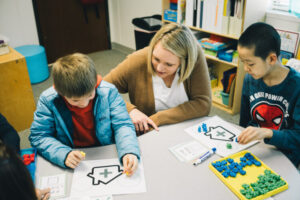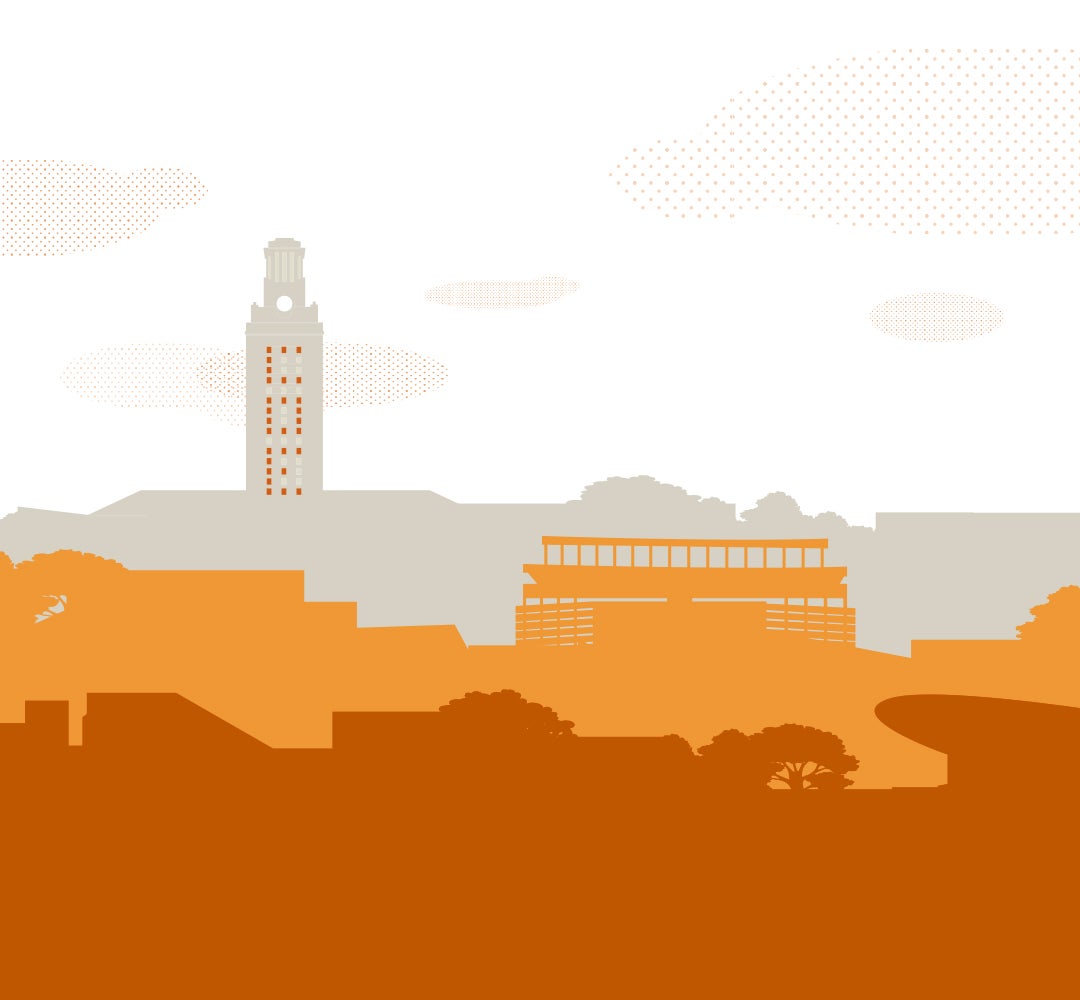
Kara Huss always knew she wanted to work with children. Exactly what shape that would take as a future career wasn’t immediately evident but she was confident she would find a way to make a difference in the lives of young people.
After graduating from the College of Education with a master’s in special education and a concentration in autism and developmental disabilities, Kara combined her interests in teaching, speech, working with neurodivergent learners and child development to enter the classroom as a special education teacher. Having also received her Board Certified Behavior Analyst (BCBA) certification, Kara was equipped with additional training and became a believer that all behaviors should be viewed as a form of communication and therefore equipped with a unique set of skills. She was able to work with and teach neurodivergent children both in the classroom and in learning environments outside of a strictly academic setting.
After over 10 years at the William’s School — a non-profit organization dedicated to providing individualized education and supporting children with autism and other neurodiversity in a nurturing and therapeutic environment — Kara is now the executive director. Her specific vision for a hybrid way of teaching special education remains a key factor in student success with students inside and outside of the classroom.
We talked with Kara to discuss her passion for child development, her plans to continue the work of the William’s School in bringing awareness, resources and opportunities to neurodiverse children and their families and how the organization has evolved over the past decade.
How did you enter the autism/neurodivergent education field?

I wasn’t sure if I wanted to do speech or child development but working with kids had always been near and dear to my heart. It wasn’t until high school when I was trying to figure out what path I would take that I was exposed to an Early Childhood Special Education (ECSE) classroom through a mentor, and I fell in love with it. Looking back, it was clear I was interested in working with students who were likely somewhere on the autism spectrum but who were unidentified and in typical placements at the time, while also demonstrating a lot of what we now recognize as difficulties.
When I went to Baylor University for my undergraduate degree, I majored in all-level special education in an EC-12 special education program that had a dual certification with elementary general education. I went that track because I loved the idea of being in the classroom with the kids all day long, versus just 30 minutes once a week, and making more of an impact to help them.
How did you transition into behavioral work?
While I was at Baylor, one of my professors, Dr. Tanya Davis, had done her doctoral work and master’s through UT and was teaching an Introduction to Applied Behavioral Awareness (ABA) course and working on research in the field. I really enjoyed the philosophy, those students and the work. It felt like it came naturally to me so I decided to go the board-certified behavior analyst route. At the time, I also still wanted to be in the classroom, but I liked having an alternate path of skill sets and options for employment in the future; for example, being able to work in any age range, in any location or environment. I enrolled in UT’s College of Education special education master’s program with a concentration in autism and developmental disabilities and that is how I discovered the William’s School.
How did you get involved with the William’s School?

They had just opened, and I was going there to do my 10 hours a week for my master’s practicum, typically from August to December. I was contacted over Christmas break and they asked me, “What do you think about teaching? You have a teaching degree, but what do you think about taking on the full-time position?” I did that for a while and when I finished my master’s program and got my BCBA, I transitioned into doing more BCBA work with the school.
For anyone unfamiliar with BCBA work, what does it mean to have this kind of certification? Why is it important?
BCBA means that we provide ABA therapy. ABA therapy is primarily given as a scientifically researched intervention for working on skills with individuals with autism but is used in lots of realms, including organizational behavior management. We look at the functions of the whys behind something and we see behavior as a form of communication. When children with autism or other students are displaying maladaptive behaviors or skill deficits, we look at why that’s happening and how to teach a more functional replacement skill for that behavior. No one is trying to be “bad” or disruptive because they want to be, but there are needs unmet somewhere, and we try to teach those behavioral skills but in a more functionally appropriate manner.
The William’s School is innovative in its approach to teaching neurodivergent students with a combination of therapy and schooling. Has your similar training in both been one of the keys to growing and flourishing there?

Yes, I think it’s what originally drew me to the model that the William’s School is set up to provide, offering the combination of a nonprofit private school with the addition of clinical services.
We have ABA, speech and occupational therapy on-site and use a really collaborative model. I was drawn to the ability to use both of my skill sets in order to do more clinical therapeutic work, but also still have exposure to the classroom and school setting. I had seen the benefits of being able to do both but in most settings, they’re very separate and there’s not a lot of acceptable overlap.
Additionally, in most traditional public schools and private schools, therapies aren’t provided on-site, and they don’t typically allow outside people to come in, so you have to choose one or the other or figure out how to balance both schedules. I really love being able to use both of my skill sets and provide that collaborative model for families to get everything their children need in just one location.
It was 2011 when you started working at the William’s School and now it’s 2024. How has the school grown in that time?
The William’s School has grown from three students to 50 students and a team of five to a team of 32 and continues to provide a service that is not being provided for individuals in our area.
We’re beginning to be a resource for non-public placements — placements from school districts with students who feel like they are not able to serve safely, or simply don’t have the best support and resources in place. We have greatly grown from that standpoint of improving our access, as well as increasing our quality of education and therapeutic services each year. This specifically is one of the things that has really changed over the years. When they originally opened the school, it was much more for high-level support for autistic students who were exhibiting extreme behavioral challenges or maladaptive behaviors. And we do still see those students. In fact, we’re the only place outside of the public schools in this area that will admit students without exclusion to the needs that they may have, as long as the appropriate resources are in place at the time. Most private schools in our area have exclusionary criteria for levels of behavior or levels of communication or level of IQ. But now we also serve students who just aren’t thriving in a mainstream setting, whether that be lower-level support sensory needs, ADHD, dyslexia and intellectual disabilities, trauma and/or anxiety.
As far as volume, we currently serve around 50 to 55 students during the school year and then additional students during the summertime. We have a staff of 32 now and typically have a waitlist of anywhere from five to 15 students. Age-wise, we have students from three to 20, which represents a wide range of abilities and needs along the development process.

